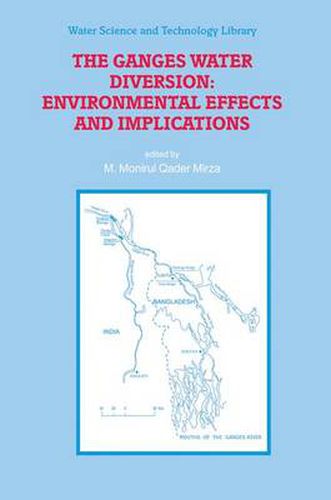Readings Newsletter
Become a Readings Member to make your shopping experience even easier.
Sign in or sign up for free!
You’re not far away from qualifying for FREE standard shipping within Australia
You’ve qualified for FREE standard shipping within Australia
The cart is loading…






This title is printed to order. This book may have been self-published. If so, we cannot guarantee the quality of the content. In the main most books will have gone through the editing process however some may not. We therefore suggest that you be aware of this before ordering this book. If in doubt check either the author or publisher’s details as we are unable to accept any returns unless they are faulty. Please contact us if you have any questions.
This book deals with environmental effects on both sides of the border between Bangladesh and India caused by the Ganges water diversion. This issue came to my attention in early 1976 when news media in Bangladesh and overseas, began publications of articles on the unilateral withdrawal of a huge quantity of water from the Ganges River through the commissioning of the Farakka Barrage in India. I first pursued the subject professionally in 1984 while working as a contributor for Bangladesh Today, Holiday and New Nation. During the next two decades, I followed the protracted hydro-political negotiations between the riparian countries in the Ganges basin, and I traveled extensively to observe the environmental and ecological changes in Bangladesh as well as India that occurred due to the water diversion. The Ganges, one of the longest rivers of the world originates at the Gangotri glacier in the Himalayas and flows across the plains of North India. Eventually the river splits into two main branches and empties into the Bay of Bengal. The conflict of diversion and sharing of the Ganges water arose in the middle of the last century when the government of India decided to implement a barrage at Farakka to resolve a navigation problem at the Kolkata Port.
$9.00 standard shipping within Australia
FREE standard shipping within Australia for orders over $100.00
Express & International shipping calculated at checkout
This title is printed to order. This book may have been self-published. If so, we cannot guarantee the quality of the content. In the main most books will have gone through the editing process however some may not. We therefore suggest that you be aware of this before ordering this book. If in doubt check either the author or publisher’s details as we are unable to accept any returns unless they are faulty. Please contact us if you have any questions.
This book deals with environmental effects on both sides of the border between Bangladesh and India caused by the Ganges water diversion. This issue came to my attention in early 1976 when news media in Bangladesh and overseas, began publications of articles on the unilateral withdrawal of a huge quantity of water from the Ganges River through the commissioning of the Farakka Barrage in India. I first pursued the subject professionally in 1984 while working as a contributor for Bangladesh Today, Holiday and New Nation. During the next two decades, I followed the protracted hydro-political negotiations between the riparian countries in the Ganges basin, and I traveled extensively to observe the environmental and ecological changes in Bangladesh as well as India that occurred due to the water diversion. The Ganges, one of the longest rivers of the world originates at the Gangotri glacier in the Himalayas and flows across the plains of North India. Eventually the river splits into two main branches and empties into the Bay of Bengal. The conflict of diversion and sharing of the Ganges water arose in the middle of the last century when the government of India decided to implement a barrage at Farakka to resolve a navigation problem at the Kolkata Port.